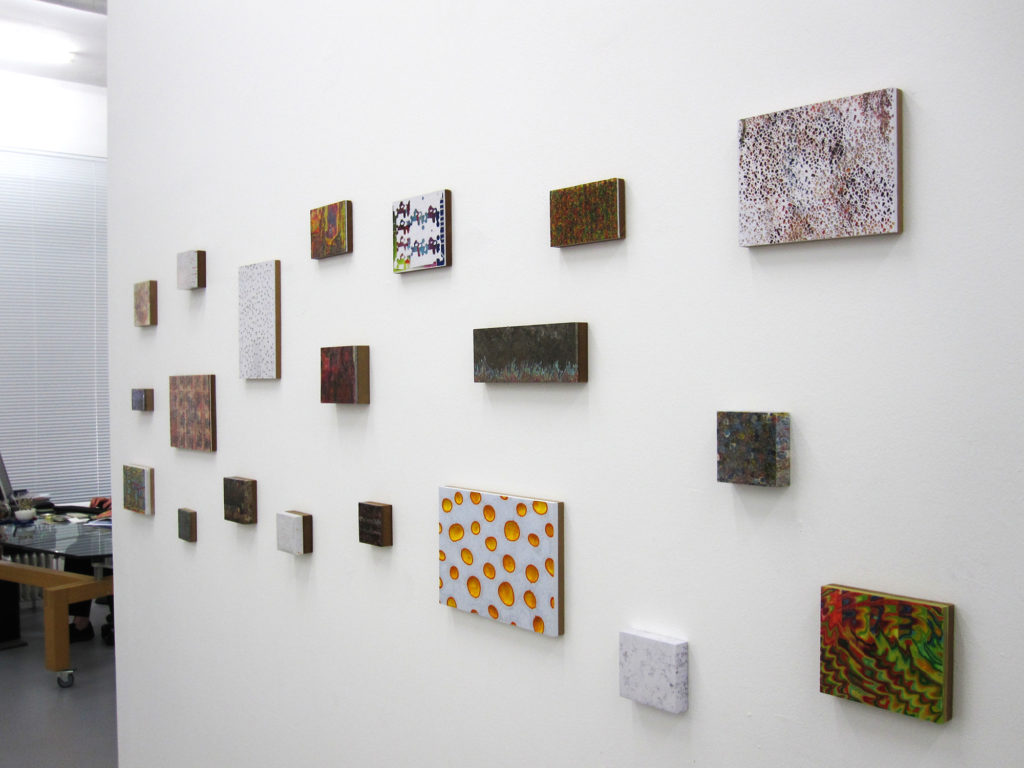Ole Müller was born in 1970 in Hamburg, Germany. He lives and works in Munich, Germany.
“Recycling” in art is nothing but new. To use, include or rework formerly found items in a new piece of art has been used by many artists over the last decades. And the process of transformation of something banal into art has long ago been a point in art history. Thus “recycling” has not been the purpose but the result of Ole Müller’s endeavor to create art in our decade. As a student and later master of the arts at the Munich academy’s sculpture department he was used to many materials but found his medium by using the colorful magazines and papers of our media-driven world: whether it is the luxurious fashion or the glossy girly magazine, whether it is the 4c-weekly advertising of the neighborhood’s supermarket or the serious book printed by an auction house, all printed materials of a certain size and color are destined to become manipulated by Ole Müller’s technique of gluing and powerful pressing methods with self-constructed tools. After a long drying process the newly created object emerges from the pressing tool and is now endlessly polished and finally covered with a protective lacquer.
Bei den jüngsten Arbeiten verwendet er speziell geschaffene Formen, in denen Kieselsteine unterschiedlicher Größe eingelegt werden. Dann presst er die feuchten Papiere – in diesem Fall Farbpapiere, also kein bedrucktes Papier – in die Form und lässt die Blöcke ebenfalls unter Druck austrocknen. Der Schleifprozess entscheidet dann anschließend wie tief die verbliebenen Einbuchtungen sind und wie viel Farbe der bunten Papiere sichtbar gemacht wird.

pdf exhibition brochure "World of Paper 3.0" - 2019
pdf exhibition brochure "WORKS ON & WITH PAPER" - 2015
pdf exhibition brochure "World of Paper II" 2013 (558,70 KB)





